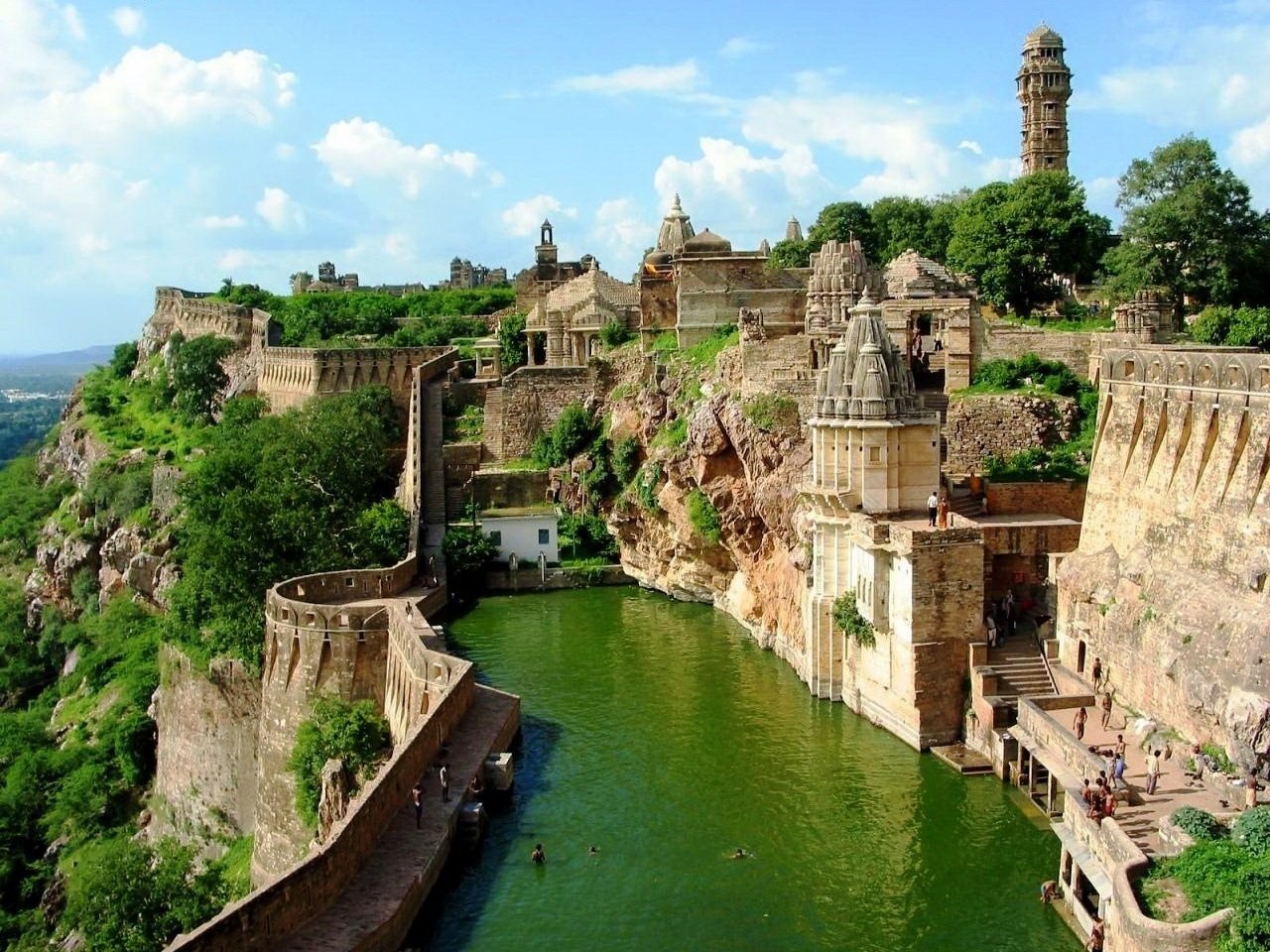Introduction: The Majesty of Chittorgarh Fort
Nestled in the heart of Rajasthan, India, Chittorgarh Fort is a monumental symbol of Rajput pride, architectural mastery, and unwavering resilience. Constructed over 1,300 years ago, this colossal fortress spans 700 acres atop a 180-meter-high hill. Renowned as one of the largest forts in India, its grandeur and historical significance have cemented its status as a UNESCO World Heritage Site.

Architectural Brilliance and Strategic Design
The fort’s design epitomizes strategic ingenuity, combining defensive strength and self-sufficiency. Seven massive gates, or pols, fortified with iron spikes and bastions, provided formidable protection against invading forces. The outer walls, or ramparts, stretch over 13 kilometers, offering panoramic views of the surrounding plains and enabling early detection of enemy advances.

A standout feature of Chittorgarh Fort is its sophisticated water management system, comprising 84 water bodies, including reservoirs, wells, and stepwells. These structures, ingeniously designed to harvest and store rainwater, could sustain the fort’s inhabitants for extended periods, even during prolonged sieges. This remarkable adaptation underscores the foresight and technical prowess of its creators.
Historical Significance and Legendary Tales
The history of Chittorgarh Fort is intertwined with tales of valor, sacrifice, and unwavering loyalty to honor. The fort was the epicenter of three major sieges, each marked by acts of extraordinary heroism:
The Siege of 1303: The most infamous siege occurred when Alauddin Khilji, the Sultan of Delhi, attacked the fort, enchanted by the beauty of Queen Padmini. Faced with imminent defeat, the women, led by Queen Padmini, performed jauhar (mass immolation) to protect their honor, while the men carried out saka (a last, sacrificial charge). This event became an enduring symbol of Rajput defiance.

Subsequent Sieges: The fort faced further sieges in 1535 by Bahadur Shah of Gujarat and in 1567 by Mughal Emperor Akbar, both of which showcased the indomitable spirit of its defenders.
Iconic Structures within the Fort
Chittorgarh Fort houses several architectural marvels, each with its own historical and cultural significance:
- Vijay Stambha (Tower of Victory)
Built in the 15th century by Rana Kumbha to commemorate his victory over the Sultan of Malwa, this towering structure is adorned with intricate carvings of Hindu deities and legends. - Kirti Stambha (Tower of Fame)
A Jain monument dedicated to Adinatha, the first Jain Tirthankara, this tower is a testament to the region’s religious diversity and artistic excellence. - Temples and Palaces
The fort is home to numerous temples, such as the Kalika Mata Temple and the Meera Temple, as well as royal palaces like Rana Kumbha Palace, showcasing the artistic and cultural legacy of the Rajputs.
Legacy and Modern Significance
Today, Chittorgarh Fort stands as a living museum of Rajput history, drawing countless visitors and historians. Its walls, sculptures, and inscriptions offer insights into the political, cultural, and religious life of medieval India. The fort’s enduring presence serves as a reminder of the sacrifices made by its inhabitants and the architectural brilliance of its creators.

Conclusion: A Timeless Symbol of Courage
Chittorgarh Fort is more than just a historical monument; it is a testament to the courage, resilience, and ingenuity of the Rajputs. From its impregnable design to the haunting tales of sacrifice within its walls, the fort remains a powerful symbol of an era defined by honor and heroism. Its legacy continues to inspire awe, preserving the spirit of a bygone age for generations to come.

